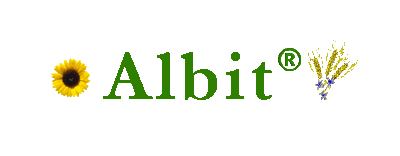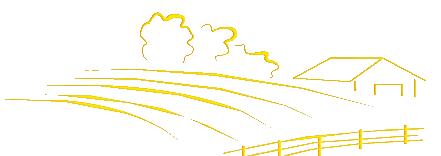|
|
Translated from: Zlotnikov A.K., Sadovnikova L.K, Balandina A.V., Zlotnikov K.M., Kazakov A.V. Usage of Albit for recultivation of oil-polluted soils. Vestnik RASHN, 2007, Nr. 1, p. 65-67.
As is known, increase of oil extraction, construction of pipelines and oil-processing factories leads to expansion of oil-polluted soils. Soil accumulates most of oil pollutions, that changes its phisical, agrochemical and and microbiological characteristics. As a result, soil agricultural significance gets lost. Therefore, it is necessary to develop ecologically safe and economically reasonable methods of hydrocarbon biodegradation intensification and soil fertility renewal (3, 5). There are several physical and chemical methods of soil recultivation. Biological method is one of the most effective ones. It is directed activation of soil microflora, inoculation of oil degrading microbes, and phytoremediation – reduction of oil pollution through stimulation of natural oil utilizing microbal community due to their interactions with oil tolerant plants. Phytoremediation makes possible relatively cheap (comparing to other remediation technologies) recultivation of large territories at negligible negative influence on envoronment (4) and 3-4 fold acceleration of soil recovery. Bioformulations, most frequently used for bioremediation, are based on bacteria (Pseudomonas, Rhodococcus, Bacillus, Arthrobacter, Acinetobacter, Azotobacter, Alkaligenes, Mycobacterium), yeasts (Candida), filamentous actinomycetes (Streptomyces), fungi (Aspergillus, Penicillium) and other micromycetes (1). Such bioformulations are biomass of living hydrocarbon-degrading microorganisms specialized on utilization of certain groups of hydrocarbon compounds. Degradation of oil in soil can be performed not only by direct utilization of hydrocarbons by microorganisms, but also by the ability of bioformulations to adjust soil microbal community (succession induction, alteration of taxonomic structure of microbial community) towards increased oil utilization (7). Bioformulations stimulate aboriginal soil biocoenosis and create conditions for transformation of oil hydrocarbons to organic humus-like compounds, positively influencing soil fertility. Albit does not contain living microbes, but provide efficient stimulation of aboriginal community of oil degrading microorganisms inhabiting oil-polluted soils (6). Albit contains natural microbial polymer poly-β-hydroxybutyrate (PHB) produced by soil bacteria Bacillus megaterium and Pseudomonas aureofaciens, balanced set of macro- and microelements, coniferous extract and additional compounds. Long-term experiments carried out by different scientific institutions (All-Russia Institute of Plant Protection, All-Russia Institute of Groat Crops, All-Russia Flax Institute, All-Russia Institute of Leguminous and Groat Crops, All-Russia Institute of Horticulture, Moscow State University, Perm Branch of State University, All-Russia Institute of Vegetable Selection and Seed Breeding, Institute of Biochemistry and Physiology of Microorganisms RAS, and others) demonstrated ability of Albit of stimulating plant growth and soil microbial community, that makes it appropriate for application within phytoremediation technology and microbial remediation of soils (2). The purpose of our work is to examine the suitability of Albit for recultivation of oil-polluted soils. Materials and methods In laboratory pot experiments carried out in Department of Soil Chemistry of Moscow State University, sod-podzolic soil, air-dried and sifted through 1 mm mesh sieve, was moistened up to 60% of field water capacity (FWC), contaminated with oil (3-5% w/w) and fertilized with solution of ammonium nitrate, triple superphosphate and calcium chloride, 0.1 g each per pot. Grass seed mix (red fescue grass – 80%, chess brome – 20%) was soaked in Albit solution (1 and 0.2 g/L) for 0.5 hours and sowed, the remaining soaking soilution was used for soil treatment (5 ml/ pot). Plants (15 seeds sown per pot, 10 plants left after germination) were grown in perforated 1 kg pots in the pavilion of Soil Station of Moscow State University in 2 triply repeated trials. In course of the experiment, 60% FWCwas maintained by repeated watering. In parallel trial, influence of directed fertilization with Albit on phytoremediation plants was studied with the same technique. Initial oil concentration in soil ranged from 5 to 20%. Soil was treated with Albit solution (1 g/10 L) four times. The residual hydrocarbon content in soil was determined by chromatography of soil n-hexane extract. In 2003-2005, Albit was studied under field conditions. First trial was carried out in Nizhniy Novgorod oblast (territories of Verkhnevolzhskiye magistralnyye nefteprovody OSC) at the coast of 600 m² oil lake (oil content is more than 50%). Before sowing of oil tolerant grasses, soil was treated with Albit (100 ml over 600 m²). Oil content in soil before sowing was 15% (150 g/kg). Second experimental plot was located near by oil pipeline Surgut-Polotsk (Nizhniy Novgorod oblast). There was irregular distribution of oil over plot, varied from 1.5 to 10.8 g oil per 1 kg of soil. Oil pollutions contained high concentrations of cancerogenic aromatic hydrocarbons and more than 30% of pyrobitumens. Albit (500 ml/1500 m²) was applied simultaneously with sowing of oil tolerant plants. at the average oil concentration in soil of 6.8%. Third trial was carried out in Nizhniy Novgorod oblast at the territory of Sormovo petroleum storage depot (LukoylNizhegorodNefteprodukt OSC). Experimental area was previously used for storage of oil wastes; oil spills were being sprinkled with sand. Original oil contamination was very high (25-60%); after its reduction with chemical methods to 8-15%, experimental area was treated with Albit (150 ml/500 m²) twice per vegetation period: before sowing and immediately after germination. Fourth trial was caried out in Nizhniy Novgorod oblast at the territory of Kerzhenets petroleum storage depot (LukoylNizhegorodNefteprodukt OSC) under swamp land conditions. First, for tussock formation after drainage, fibrous-rooted sedge was sowed. Albit was applied in rate 180 ml/1000m² before sowing of opil tolerant grasses (red fescue grass, meadow grass, awnless brome, English ryegrass, vetch, fibrous-rooted sedge) and immediately after germination. Oil content in soil before trial was 15.2% on average. Results Laboratory experiments demonstrated high efficiency of Albit presowing seed treatment of plants used for bioremediation at low-level soil contamination with oil (3-5%). Natural reduction of hydrocarbons content observed in control can occur due to activity of soil microbial community and evaporation of kerosine fractions; Albit accelerated soil natural cleansing 1.67-3.15 fold. By the end of vegetation, pots treated with Albit contained 1.8-10.6 times less oil than control ones, and approximatelly 2 times less than pots with plants only (without Albit treatment). The best results were obtained for pots treated with 0.2 g/L of Albit (Table 1). Table 1. Efficiency of Albit presowing seed treatment of plants used for bioremediation (pot experiments).
Albit also demonstrated plant growth stimulating activity, increasing plant biomass by 3.38-4.13 g/pot (up to 4.48 g/pot by the end of experiment). Obviously, Albit, due to its plant growth stimulating activity, provides better survival of plants under stress conditions of chemical contamination, which, in turn, supply microorganizms with products of photosynthesis and therefore accelerate oil degradation on soil. As it was shown earlier, Albit is able to activate natural soil microbial community (directly or through stimulation of plant growth) that also leads to acceleration of oil degradation (2). At higher oil content in soil (5-20%), direct soil treatment with Albit was highly efficient. In experiment, 4 times repeated watering with Albit solution led to 1.3-2.8 fold reduction of oil content in soil, depending on initial oil concentration. Treatments with Albit were efficient for all studied oil contamination levels. Thus, while average oil content at the beginning of the experiment was 5, 7.5, 12.5 and 17.5%, by the end of experiment it decreased till 1.8, 5, 7 and 14% respectively. Efficiency of Albit was confirmed in large-scale field trials carried out by Perm branch of Moscow State University (Fig. 1). In first trial, treatment with Albit and sowing of grasses decreased oil contamination from 15% (150 g/kg) to 6% by the end of vegetation period. In second analogous trial, oil content in soil was decreased from 6.8% to 4.1% after grass coming up. In third trial, oil contamination was 8-15% (11.5% on average) at the beginning, but after treatment with Albit and sowing of grasses – just 1.6-4.8% (3.2% on average). In forth trial, bioremediation, Albit treatment and grass sowing reduced oil contamination from 15.2 to 2.4%.
Fig. 1 Efficiency of phytoremediation accompanied with Albit treatment on
territories of oil transport and processing complex of Nizhniy Novgorod oblast. (2003–2004): Thus, for cleansing of oil-polluted soils, it is desirable to use Albit with sowing of oil tolerant grasses. Soil should be treated with Albit (1.5-3.5 L/hectare, or 0.2—0.3 ml/m²) simultaneously with grass sowing or after that. The higher contamination, the higher concentrations of Albit working solution must be used (up to 10 g/L). To obtain maximal efficiency, it is desirable to soak seeds in Albit solution (conc. 0.2 ml/L). Literature
|
|
||||||||||||||||||||||||||||||||||||||||||||||||||||||||||||||||
Terms and Conditions
|
|


 Laboratory experiments have proved that Albit is capable to significantly reduce
oil pollution under field conditions, thanks to stimulation of natural soil microflora and plant
growth. The speed of oil decomposition in soil under the action of Albit increases on the average
by 1.67-3.15 times. Production experiments demonstrated that Albit together with sowing oil
tolerant grasses might reduce oil pollution of soil by 1.5-10.0 times in one vegetation season.
Practical recommendations were formulated for use of Albit during soil recultivation.
Laboratory experiments have proved that Albit is capable to significantly reduce
oil pollution under field conditions, thanks to stimulation of natural soil microflora and plant
growth. The speed of oil decomposition in soil under the action of Albit increases on the average
by 1.67-3.15 times. Production experiments demonstrated that Albit together with sowing oil
tolerant grasses might reduce oil pollution of soil by 1.5-10.0 times in one vegetation season.
Practical recommendations were formulated for use of Albit during soil recultivation.
